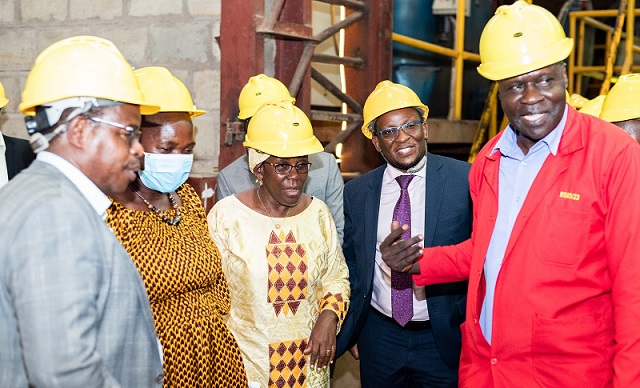
Eight regional training sessions targeting 1,130 SMEs were conducted in different parts of the country in preparation for access to credit
Kampala, Uganda | THE INDEPENDENT | Uganda Development Bank, the country’s national development finance institution has reported a 52% surge in loan portfolio to Shs1.2trillion for the year ended December 31, 2022, signalling increased appetite for long-term loans.
Similarly, the lender’s assets grew by 19% from Shs 1.21 trillion to Shs 1.44 trillion on account of growth in funding, mainly through capital allocations from the government and drawdown of lines of credit from various funding partners for the bank.
Allan Joshua Mwesigwa, director of strategy and corporate affairs at UDB said, said during a visit to Bwendero Dairy Farm in Hoima City on Feb.10, that the 2022 financial results reflect a strong investment in various businesses, improved livelihoods and heavy support towards the economic recovery.
“This performance is anchored on the bank’s deliberate efforts towards the revitalisation and transformation of Uganda’s economy,” he said adding that the performance gives them confidence that they are on track to achieve our strategic objectives.
Uganda has lived through major socio-economic shocks in the last three years including Covid-19, adverse climate and the impacts of geopolitical shocks.
Mwesigwa said the lender’s product portfolio has been designed to support key priority sectors to achieve their full potential that aligns with the country’s strategic direction and National Development Plan III.
Loan approvals
The value of new loan applications approved to receive funding grew by 40% to Shs894 billion during the same period under review.
The industrial sector (comprising of manufacturing and agro-industry) received the highest number of approvals worth Shs454.75 billion with primary agriculture receiving Shs96.75 billion.
The lender disbursed Shs776.6 billion during the year 2022, improving by 81% from Shs428 billion disbursed in 2021. Of this sum, 76% was disbursed to projects engaged in agriculture, agro-processing and manufacturing.
Meanwhile, in 2022, the bank launched a special program’s intervention which has effectively implemented several strategies, with a focus on channelling interventions to promote small and medium-sized firms as well as businesses run by women and youth within the lender’s supported sectors.
Following a year of implementation, the bank approved over Shs31.5 billion with 128 enterprises (including 42 women-owned). It further launched the Business Accelerator for Successful Entrepreneurship (BASE) aimed at preparing entrepreneurs for financing through enhanced business practices.
Eight regional training sessions targeting 1,130 SMEs were conducted in Kampala, Mbarara, Fort Portal, Lira, Gulu, Arua, Masaka, and Mbale districts during the year, leading to the identification of funding prospects amounting to Shs147.3 billion.
Furthermore, 77 hitherto informal enterprises undertook various business formalization processes – with 45 registering their business names and 37 others formally registering as new taxpayers or for tax certification, according to Mwesigwa.
Mwsiggwa said at least 274 enterprises will participate in the inaugural UDB Business Incubation Program to be held this year to enable participants to be credit-ready, and potentially prospective customers of UDB.
Job creation
Meanwhile, the approved projects for the year mostly in agriculture, agro-processing and manufacturing, are expected to generate 35,372 new direct jobs and Shs9.35 trillion billion worth of output value. These are further expected to generate Shs393.79 billion in tax revenue for the government and attract foreign exchange earnings of Shs1.58 trillion.
John Magara, the proprietor of Bwendero Dairy Farm, appreciated the UDB for the support that has enabled them to install a sugar plant in Kitoba village in Hoima District.
He said the company’s production company has since improved from 38.6% in 2021 to 77.3%, producing 580 tons per day in 2022.
“The farm has been able to diversify its operations to sugar processing, distillery, and milling, hence producing brown sugar, maize flour, and pharmaceutical ethanol, among others,” Magara said.
 The Independent Uganda: You get the Truth we Pay the Price
The Independent Uganda: You get the Truth we Pay the Price


